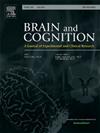Distractor-induced deafness: ERP correlates of auditory distractor processing
IF 1.4
3区 心理学
Q3 NEUROSCIENCES
引用次数: 0
Abstract
Distractor-induced deafness (DID) refers to the impaired detection of an auditory target when preceded by a rapid sequence of auditory distractors sharing the target’s features. We examined whether the neural signatures underlying DID resemble those found in visual distractor-induced blindness (DIB). Participants completed a rapid serial auditory presentation (RSAP) task in which distractor number and cue-target onset asynchrony were systematically manipulated. Behaviorally, target detection declined with increasing distractor number, closely replicating the behavioral DIB effect. Event-related brain potentials (ERPs) evoked by the distractors, however, revealed modality-specific differences: In contrast to earlier DIB findings, the amplitude of a fronto-central negativity decreased with increasing distractor load in the auditory task. Whereas the ERP responses in the visual DIB setup supported the notion of a cumulative inhibitory mechanism triggered by distractors, the current DID findings are rather in line with temporal expectation accounts.
干扰物诱发耳聋:听觉干扰物加工的ERP相关
干扰物诱发性耳聋(DID)是指在快速出现一系列与目标具有相同特征的听觉干扰物时,对听觉目标的检测能力受损。我们研究了DID的神经特征是否与视觉干扰诱导失明(DIB)相似。参与者完成了一项快速连续听觉呈现(RSAP)任务,在该任务中,干扰物数量和线索-目标启动的异步性被系统地操纵。在行为上,目标检测随分心物数量的增加而下降,与行为DIB效应密切相关。然而,干扰物诱发的事件相关脑电位(ERPs)显示了模态特异性差异:与早期DIB研究结果相反,在听觉任务中,额-中枢负性的振幅随着干扰物负荷的增加而下降。尽管视觉DIB设置中的ERP反应支持由干扰物触发的累积抑制机制的概念,但目前的DID研究结果与时间预期相符。
本文章由计算机程序翻译,如有差异,请以英文原文为准。
求助全文
约1分钟内获得全文
求助全文
来源期刊

Brain and Cognition
医学-神经科学
CiteScore
4.60
自引率
0.00%
发文量
46
审稿时长
6 months
期刊介绍:
Brain and Cognition is a forum for the integration of the neurosciences and cognitive sciences. B&C publishes peer-reviewed research articles, theoretical papers, case histories that address important theoretical issues, and historical articles into the interaction between cognitive function and brain processes. The focus is on rigorous studies of an empirical or theoretical nature and which make an original contribution to our knowledge about the involvement of the nervous system in cognition. Coverage includes, but is not limited to memory, learning, emotion, perception, movement, music or praxis in relationship to brain structure or function. Published articles will typically address issues relating some aspect of cognitive function to its neurological substrates with clear theoretical import, formulating new hypotheses or refuting previously established hypotheses. Clinical papers are welcome if they raise issues of theoretical importance or concern and shed light on the interaction between brain function and cognitive function. We welcome review articles that clearly contribute a new perspective or integration, beyond summarizing the literature in the field; authors of review articles should make explicit where the contribution lies. We also welcome proposals for special issues on aspects of the relation between cognition and the structure and function of the nervous system. Such proposals can be made directly to the Editor-in-Chief from individuals interested in being guest editors for such collections.
 求助内容:
求助内容: 应助结果提醒方式:
应助结果提醒方式:


